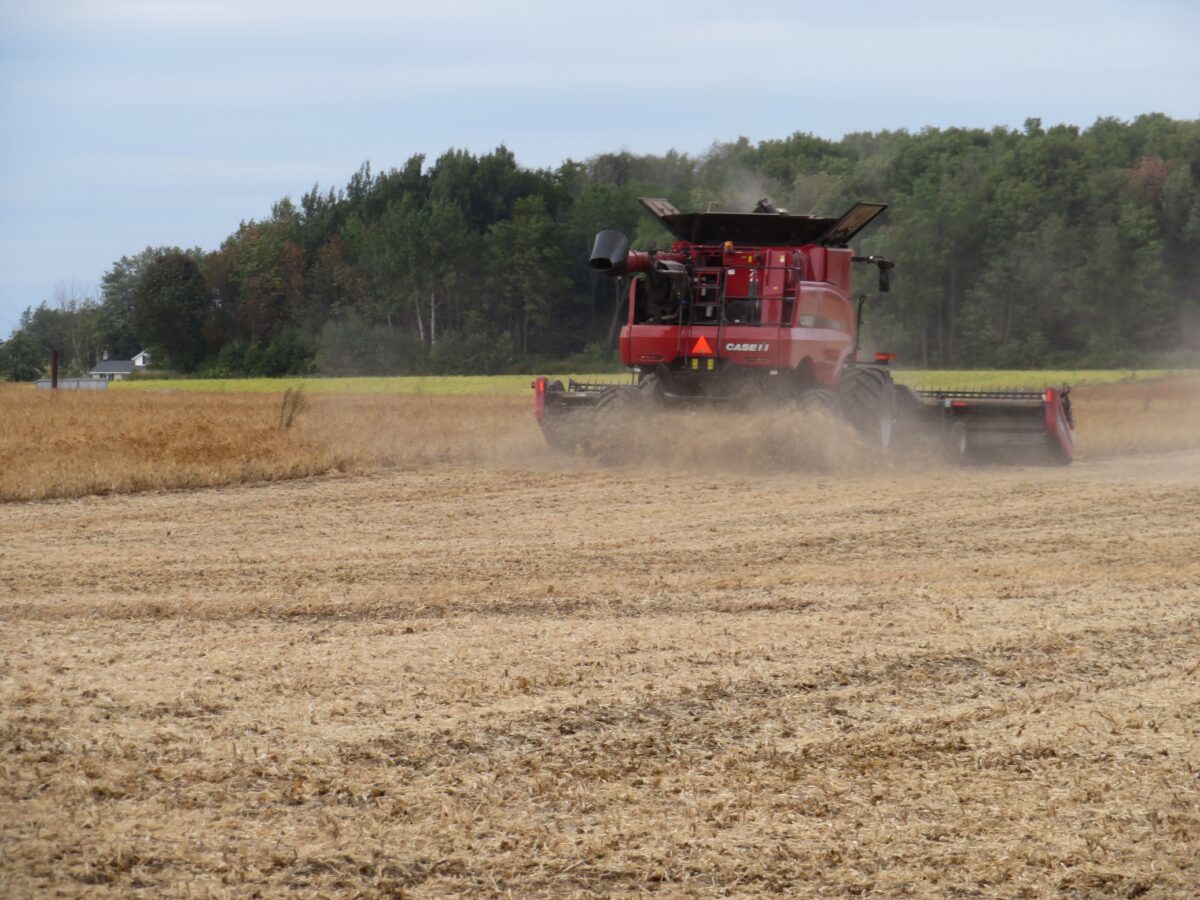Bean types most suited to direct harvest include white beans with upright plant type, adzuki beans, black beans and pinto beans. Some larger-seeded types can be successfully direct harvested when grown in narrow row widths and harvested at appropriate seed moisture to reduce seed damage.
Combine enhancements help reduce harvest losses and minimize dirt, splits and damage to the beans. The cleaning and threshing characteristics of the crop will change throughout the day as moisture content changes, meaning that adjustments to the combine should be conducted throughout the day.
Combine set-up considerations are:
- Keep knives sharp to minimize shatter losses.
- Run cylinders only fast enough to thresh the crop. Run as much plant material as possible through the cylinder to minimize seed damage. Cylinder speeds on many combines do not go below 250 rpm, which can be too fast for easily threshed beans. Cylinder slow-down kits, which include a smaller diameter drive pulley and a belt, are available.
- Run unloading augers slow and full to minimize seed damage. The short vertical auger on the combine (turret auger), which takes seed from the bottom of the tank to the main unloading auger, is a point of high potential seed damage. Some bean producers have changed unloading augers to conveyer belt systems.
- Set combine ground speed to about two-thirds the speed used for harvesting soybeans.
- Use vine crop lifters which raise low hanging pods before the plant is cut. This can be one of the greatest benefits when harvesting varieties without a strong upright plant type. Direct harvesting at an angle to the row distributes the flow of bean plants across the knife.
- Adjust the flexible floating cutter bar to clip the bean plants as close to the ground as possible. This will help minimize the cutting of low-hanging pods and associated seed loss. The knife must cut cleanly and quickly to avoid shaking the plants, splitting pods and shattering beans. Most losses that occur are shatter loss. Ontario studies have shown that a flexible floating cutter bar can reduce losses by 25% compared to a conventional floating header. In addition, a “quick-cut” sickle bar can reduce loss by up to 40% compared to a standard sickle bar.
- Use an air reel to significantly improve intake of plants into the combine and reduce losses at the knife. The air blast keeps weeds and bean plants off the knife, offering better cutter bar visibility without shoving stones into the header. The biggest benefit of the air reel is demonstrated under difficult harvest conditions, when the crop is lodged or the volume of crop is reduced. Under good conditions, harvest losses may be as low as 3%, regardless of whether an air reel is used. As pods dry late in the day, header `losses can reach more than 20% with a standard pick-up reel, while losses with an air reel are only 10%.
- Follow a modified harvest pattern to improve yield and quality. Travelling against the direction of lodging allows the harvest of leaning branches and low-hanging pods and can reduce stubble losses. In an unevenly maturing field, delay harvest in the affected areas until they are mature.
